class: center, middle, inverse, title-slide .title[ # Social Resilience ] .author[ ### David Garcia <br><br> <em>ETH Zurich</em> ] .date[ ### Social Data Science ] --- layout: true <div class="my-footer"><span>David Garcia - Social Data Science - ETH Zurich</span></div> --- # The question of social resilience <div style="float:right"> <img src="Nauru.jpg" alt="Satellite image of Nauru." width=400pt/> </div> > **Social Resilience:** The ability of a community to withstand external stresses, disturbances, and environmental changes Nauru as an example of lack of resilience: - Environmental shock in phosphate mining - Loss of population and employment What makes a society lose less or even gain from adversity? --- # Why do online social networks collapse? .center[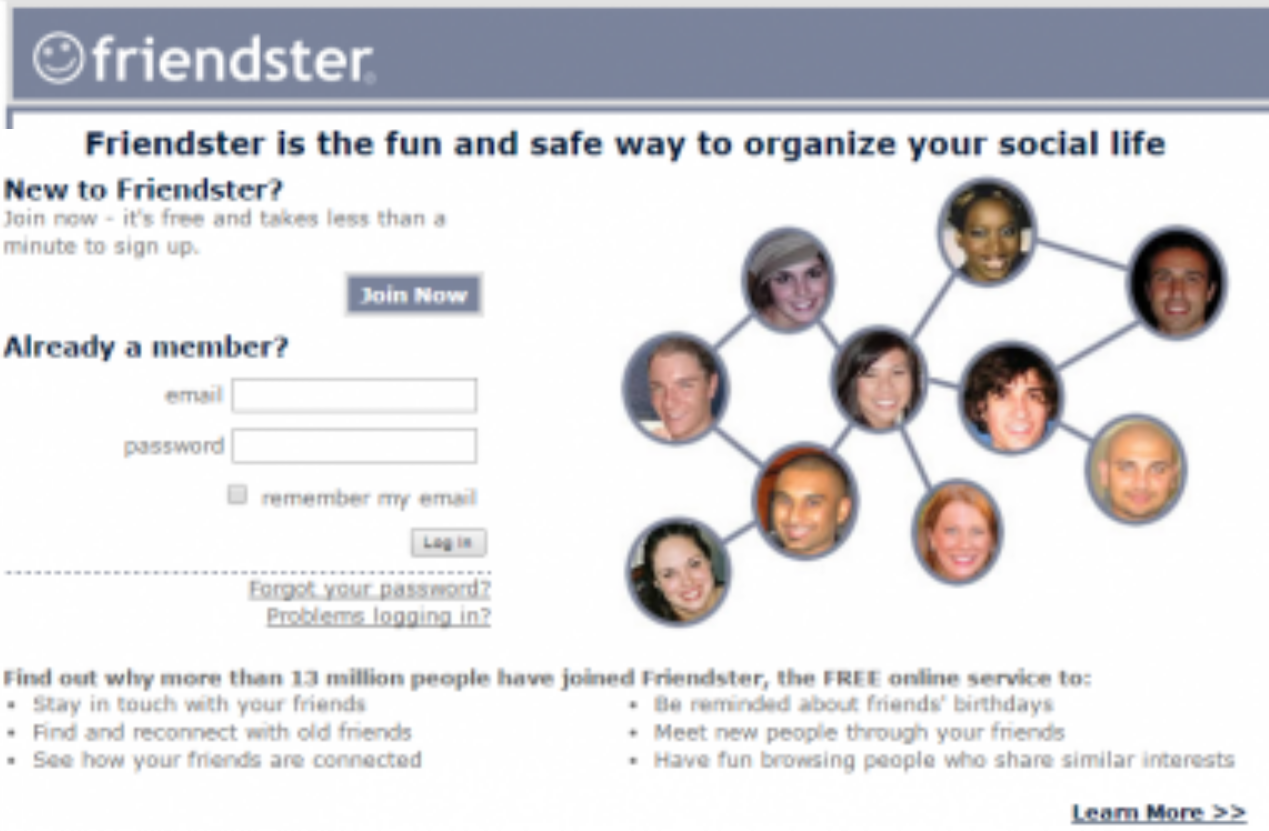] --- # Modelling social resilience online Social resilience can be modelled as a process of how users stay active or inactive in a social networking site. If we consider social network users as rational, they will respond to incentives to stay active or to abandon social networks depending on **benefits and costs**. ### What are the benefits that users get from online social networks? --- # Modelling benefits If we consider social network users as rational, they will respond to incentives to stay active or to abandon social networks depending on **benefits and costs**. **Benefits** can be quantified through the content users receive from their friends (shares, comments) and through the attention and support given by their friends (likes, votes). A simple way to model monotonic benefits is proportionally to the active friends of a user `\(k_u\)`: `$$benefit_u = b * k_u$$` ### What are the costs of being active in a social network? --- # Costs of using an online social network <div style="float:right"> <img src="user3.jpg" alt="table flip." width=300pt/> </div> **Costs:** Using social network is not only benefits, there are also costs associated with being active, for example: - Time spent to learn to use the interface of the platform - Risks of disclosing personal information - Opportunity costs: you could be doing something else - Economic costs, for example membership fees. A common assumption about costs is that they are relatively similar for all users, thus modeling them as a constant `\(c\)`. Then, a user will become inactive when the total benefits are below the cost: $$ b *k_u < c $$ --- .center[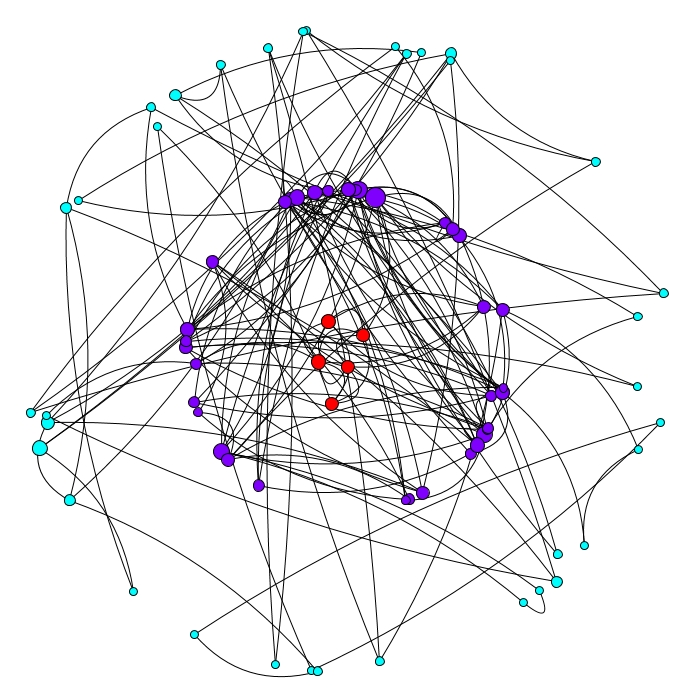] --- .center[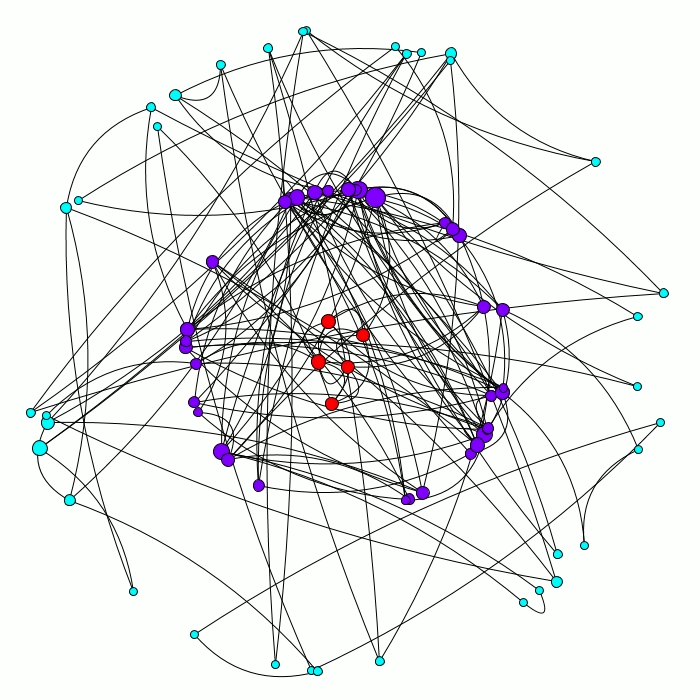] --- .center[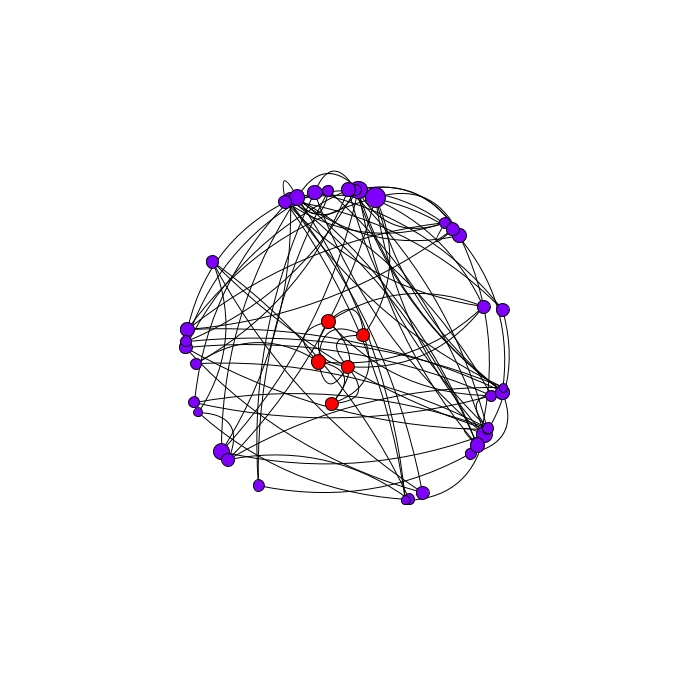] --- # The k-core decomposition The graph remaining after the cascade above is what is called a k-core > **k-core**: A k-core of a graph `\(G\)` is a maximal connected subgraph of `\(G\)` in which all vertices have degree at least k. For any network, you can calculate its k-core decomposition as follows: - Start with `\(k_s=1\)` - Remove all nodes with degree less than or equal to `\(k_s\)` and their links - Repeat until all nodes have degree larger than `\(k_s\)` - Increase `\(k_s\)` by one and repeat until no nodes are left The nodes and the edges removed for certain of `\(k_s=k\)` is called the **k-shell**. A **k-core** is the set of all k-shells with `\(k_s \geq k\)`. --- # Coreness centrality .center[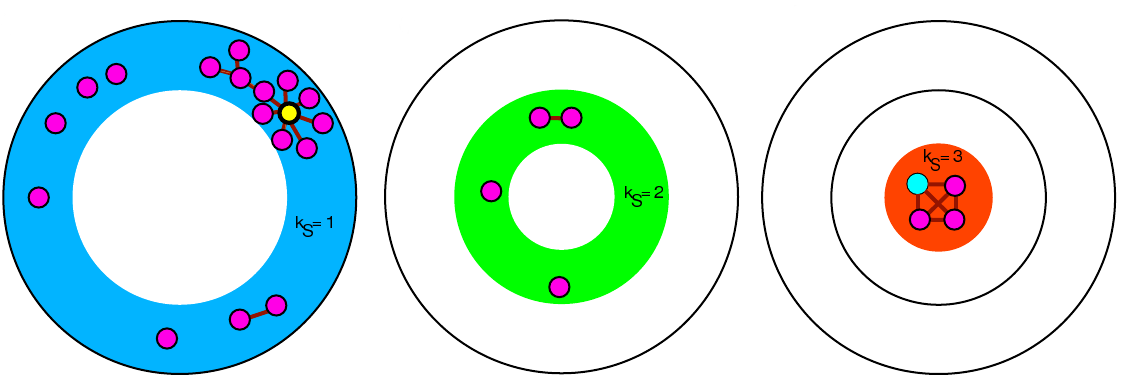] The k-shell number of a node is also called **coreness centrality**. [Kitsak et al.](https://www.nature.com/articles/nphys1746) showed that coreness centrality is a better predictor of simulated spreading cascade sizes than other centrality measures like degree and betweeness. --- # Coreness and social resilience The cost to benefit ratio `\(c/b\)` defines a critical value of the degree `\(K\)`, below which users with degree `\(k_u<K\)` will leave the social network. The remaining active social network is the k-core corresponding to `\(K\)`. The cumulative function of coreness values in the network serves as a **resilience function**: .center[] --- # Empirical resilience functions .center[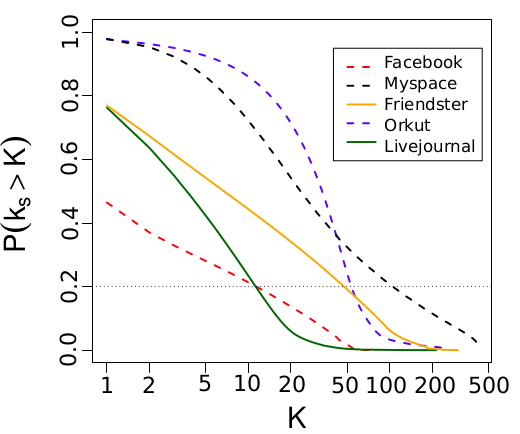]